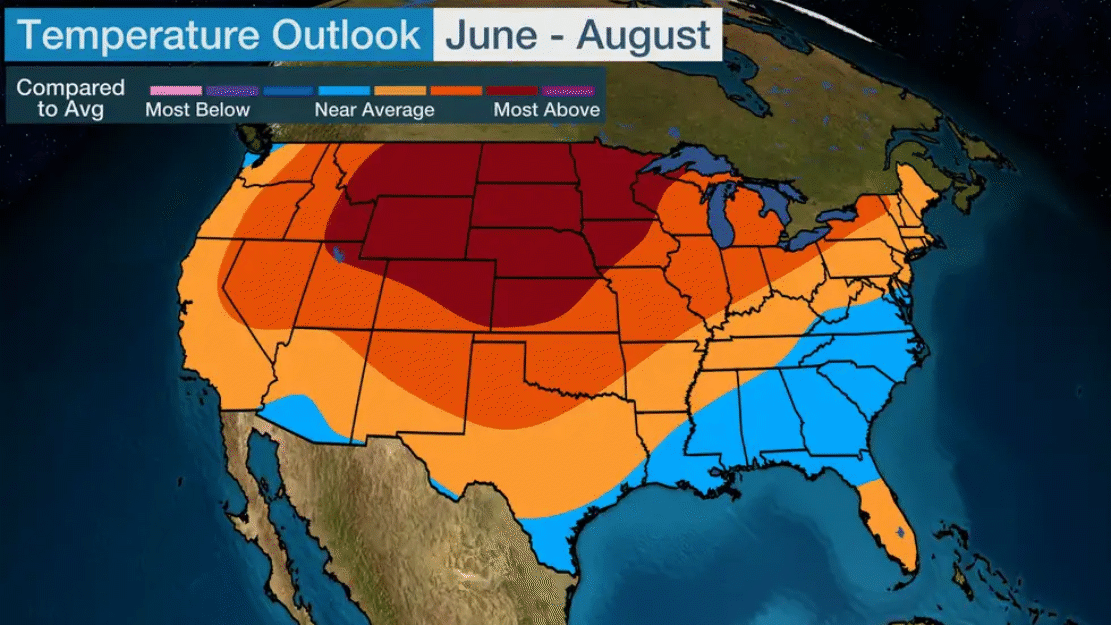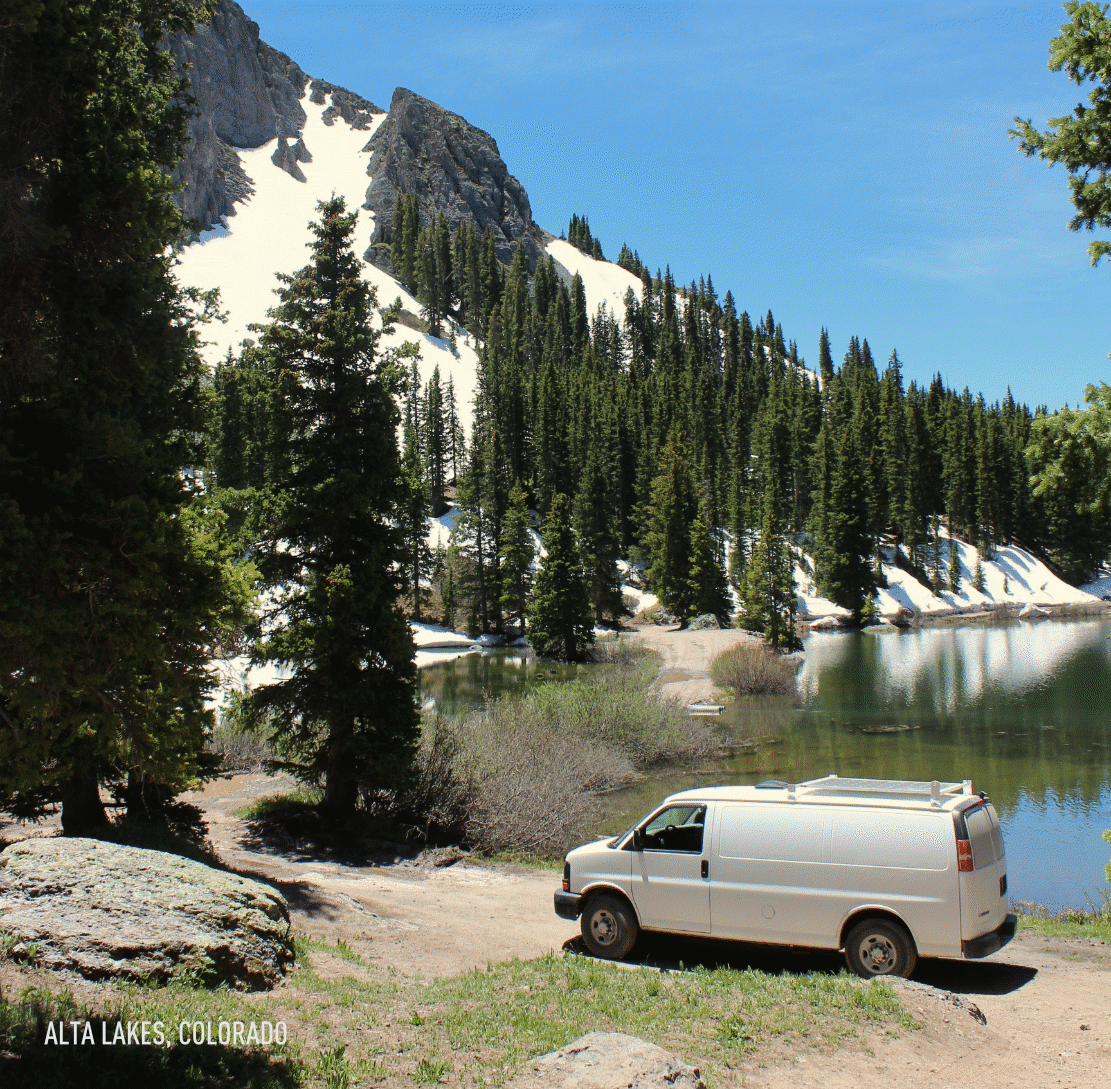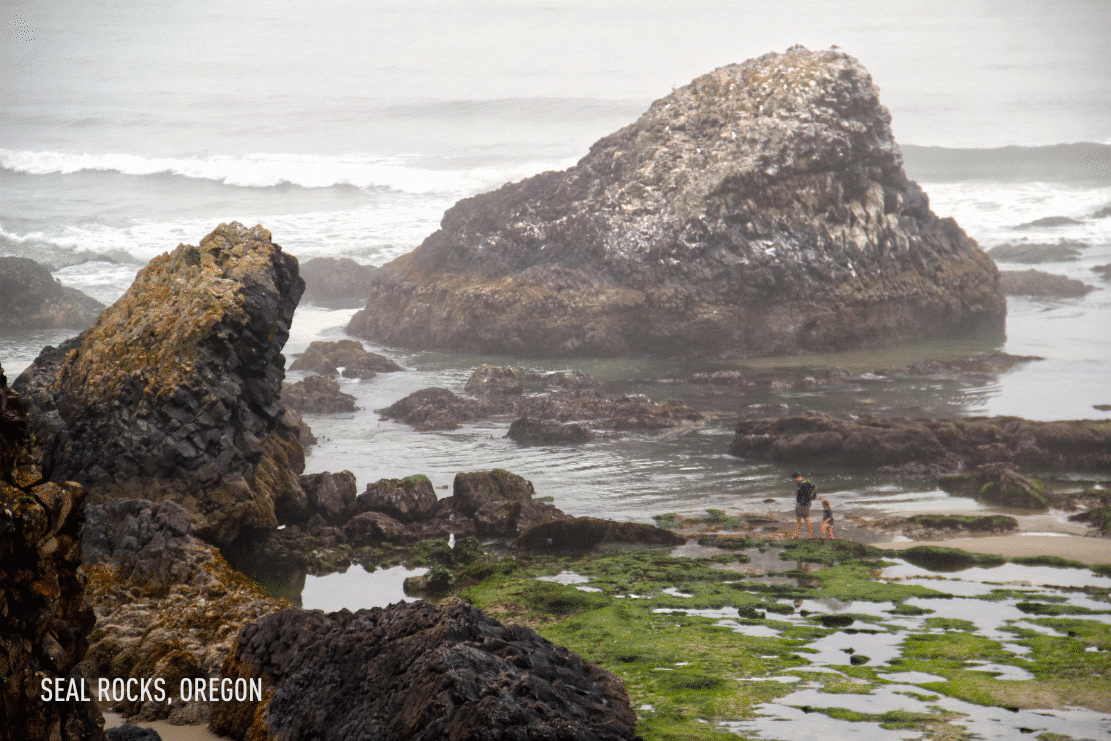
CRAZY WEATHER the past few years has made it harder for those of us living in vehicles to escape high heat. Will things be better this summer? According to the Weather Channel and Atmospheric G2, probably not.
Standard practice for nomads seeking cooler summer temperatures is to migrate northward or to higher elevations—or both. That will be harder this year—and possibly for the future.
The Outlook for June through August
Hotter-than-average conditions will encompass much of the country this summer.
… Starting the summer in June, the core of the heat is anticipated to be in parts of the West, while the East will generally experience temperatures on either side of average.
Temperatures will be the farthest above average for areas from the northern Rockies into the Northern and Central Plains and upper Mississippi Valley for the June-through-August period. Warmer-than-average conditions will extend from parts of the Northwest southward into northern Texas and as far east as the eastern Great Lakes.
As summer comes to a close in August, the heat is expected to extend eastward into the Northeast. […] Once again, the southern tier will trend near or on either side of average.
If that turns out to be the case, then the northern tier of states might be as hot as the southern tier.
So, Where Can You Go to Escape the Heat?
Rather than just following the northward/upward routine, it looks like this summer will require close monitoring of forecasts and temperature maps in order to locate pockets of relief.
Summer favorites like Flagstaff, at 7,000 feet, might not be high enough to get above the heat. Eight- or nine-thousand feet might be necessary. That suggests the mountains of Montana, Wyoming, or Colorado .

Areas along the coast—and by “coast” I mean within view of the water—are usually cooler. That’s how I endured the triple-digit heat of 2017 and 2018. But it wasn’t easy or cheap. Coastal boondocking spots are rare and campgrounds are always crowded.

With the Pacific Northwest, Northern Plains, Great Lakes and, eventually, New England becoming hotter than average, “going north” might mean Canada and Alaska. (Or, if you have the resources, enjoy winter in the Southern Hemisphere. I hear June through August is lovely in Peru.)
Even if you’re geographically limited for various reasons (like the price of fuel these days) there are steps you can take to keep some of the heat at bay. Here’s a look back at the first of a multi-part video series of Bob’s tips for beating the heat.

Got it figured out. That comment about staying in visual range of the coast was right on the button. But it costs and there are not many dispersed camping locations. Luckily I have a way. You can stay for a night, or two, and sometimes three nights at the parking lots for the casinos on the coast. There are five of them. Coos Bay, Florence, and Lincoln City in Oregon, and Ocean Shores in Washington. A couple of the casinos require that you play at something for about an hour shown on your player’s card and at least $40 shown invested. There are very smart ways to break even doing that. So all it costs for two months on the coast is the gas money between parking lots.
The longest trip is about 250 miles but you can fit in a casino wonderland in the mega casino at Ridgefield along I-5. You hit this one after sunset when it cools off a little. Then you leave for Ocean Shores the next morning when it has cooled off. There’s one at Grand Ronde, Oregon too. But it’s 26 miles inland where it’s hotter. Still, you go there at around 10:00pm and stay in their parking lot if you are in the Lincoln City area. Just go back to the coast and hang out all day.
It really is easy to head north in the summer and south in the winter. I camp for $1.00 a day in Hayward, WI and Savanna, IL areas. As fall closes in head South Pahrump, NV is great until winter then head to Quartzsite, AZ. To me this is my least favorite car camping it looks like you’re living on the moon. i have visited the Slaps and I pay $1.00 a day to live at MoJo’s camp just to be safe or you can camp for free outside and away from others. All the places I go have showers, toilets (except the Slabs) and library’s for on line use.
I’ve been to Hayward, to the Freshwater Fishing Hall of Fame. It’s not that I’m a fishing fan, I just think the colossal fish statues/buildings are cool.
Where’s the cheap camping by Savanna ? All I know about is the state park.
Nothing is cheap in Illinois these days.
I love these videos. Bob is a man after my own heart. “I’m not out here having a fashion contest.” He’s a practical “form follows function” kind of a guy. He slams his food in a microwave, and presto, there’s dinner. Just throw the junk where it will stay until I need it. It’s a carefully orchestrated pile of just what is needed and good enough. Now, with the new ambulance, he has instant backdrops. They even fake me out at times. I designed my van build because of video three in this new series. That idea of shading the van with space blankets while the solar panels and van stay in the sun. That was great. Keep making those videos Bob. I need to see a cooking with microwave in your man cave series. I need recipe ideas and happy faces selling it.
a crockpot is a great tool, Reynolds now has a cooking bag for crockpots so no mess, they have also steaming bags for veggies, fish, whatever, again no mess, microwave and crockpot cooking have never been easier, one dish i enjoy is chicken, rice, broccoli & if you have it some chicken boulion and water into the crockpot or crockpot cooking bag and after a day out of fishing or whatever enjoy a great meal, crockpots don’t use much energy so it won’t suck up too much power, they make small crockpots for just one person which takes up no room
BTW, Al, great picture for the blog. That’s an 11 on the 10 scale.
Which photo?
@ Al, it’s the cover photo with a white van parked or moving past a volcanic eruption. It’s the one that brings you to this page.
Thank you.
It’s how it feels in Tampa, Fl in summer when the humidity is 100% and the temperature is 95 degrees at 5:00am, you see fog. You can almost see dinosaurs in the brush. Then you think, yep, I’m going to now go pound nails in the sun for 8 hours to earn a few dollars.
Thanks for the heads up Bob! I am preparing to travel for the first time in a tiny trailer. I know you spent many years in Alaska. I’m wondering if you could do some videos or articles about boondock camping there? That would be so tremendously helpful! Thanks again for all you do!
There are several Alaska related articles archived on the site. Just use the “Search here” button at the top of the page.
Thank you Al!
I’ve got a story coming out here soon with THE secret place to be in the East, in the Mid-Atlantic region.
Can you send your story onto my email? Do you do that? I am already a guest on this site…but I don’t know who GW is….
I would love to read your story – will you link it here perhaps?
It’ll be posted here on Friday.